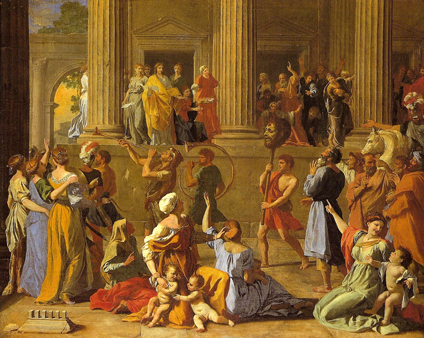'Unless you are mad, stupid, terminally narrow-minded or have some other such watertight ex-cuse, make sure you visit it.' Andrew Graham-Dixon falls in love with Nicolas Poussin
The young man at the centre of the procession has brought something very unusual with him, something he wants to share with everyone present. It is a huge decapitated head on a pole. He holds it up for all to see like an athlete holding up a trophy as he runs a lap of honour. Trumpeters blowing a fanfare precede him, while the people in the crowd exhibit what can only be called the full gamut of human response. Some hold their hands up in horror and relief. Some thank the lord. Some shake their fists. Some embrace one another, or raise their arms in acclaim like sports fans celebrating a score (yesss!!!) by their team. Some wonder what on earth is happening andneed to have it explained to them. Some debate the morality of it all. Some, babies and young children, laugh or cry or just burble and carry on doing not very much in particular. Some think the young man is rather attractive.
This is David shortly after slaying Goliath as painted by Nicolas Poussin, circa 1632. On loan from the Dulwich Art Gallery, it is one of more than 80 paintings in "Nicolas Poussin: The Father of French Painting" at the Royal Academy, which is much too remarkable and cornucopian an exhibition for mere recommendations. Unless you are mad, stupid, terminally narrow-minded or have some other such watertight excuse, make sure you visit it.
The Triumph of David is worth dwelling on because it is one of those masterpieces into which a great painter appears to have squeezed almost every part of himself. An ancient myth, reimagined, has...


